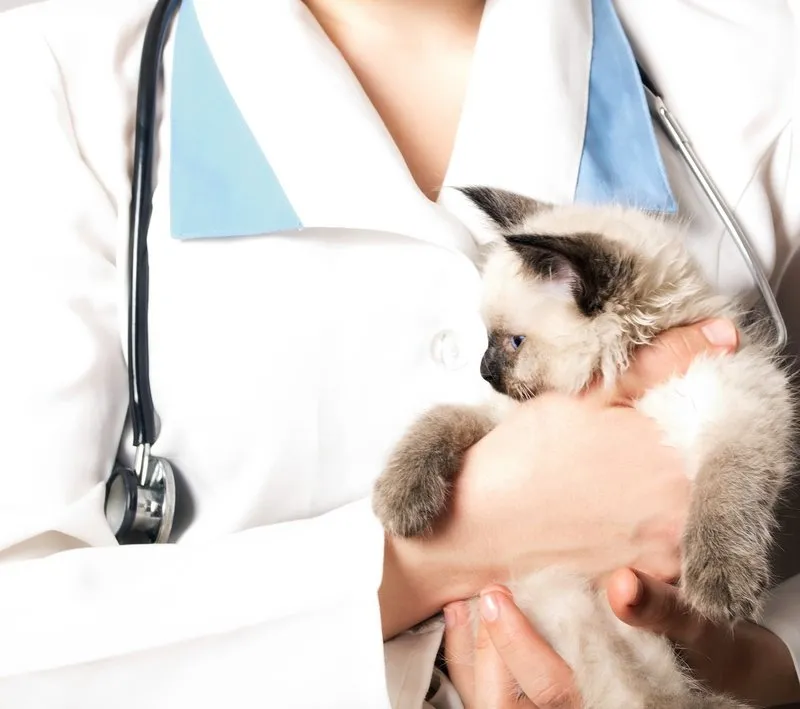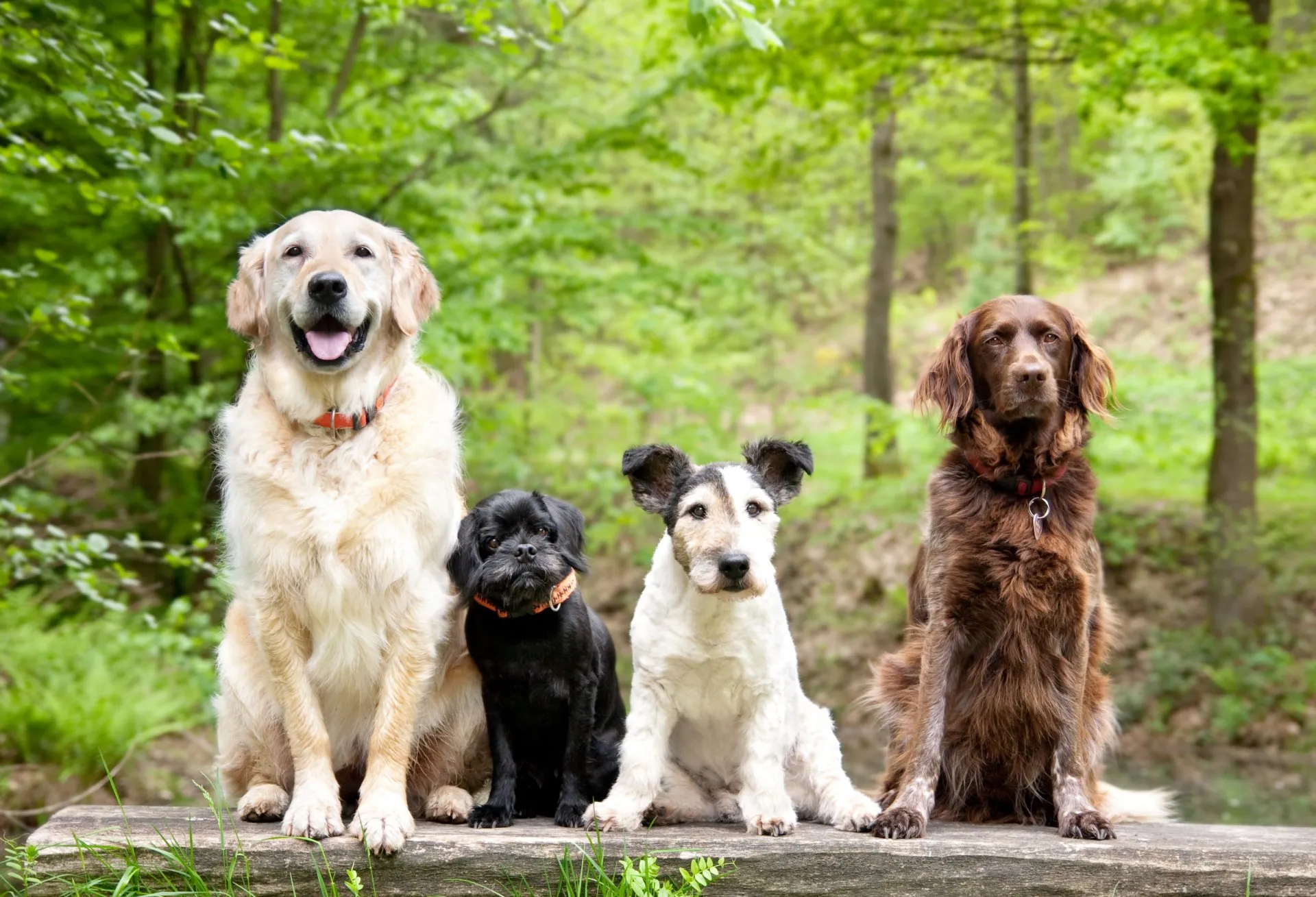Everybody knows that the unofficial theme for February is love. As Valentine’s Day approaches, stores fill with romantic trappings, such as flowers and candies. However, when it comes to pets, the focus is the opposite: it’s Prevent A Litter Month, Spay/Neuter Month, and Feline Fix By Five Month. All three of these awareness events have the same focus: battling the pet overpopulation issue by reducing the number of unwanted litters of puppies and kittens. A local Coventry, RI veterinarian offers some insight into this topic below.
How Old Should A Puppy Be To Get Spayed/Neutered?
There are some gray areas here. Fido’s size will play a role. Currently, the AKC recommends that small dogs be fixed when they are between the ages of six and nine months. For large breeds, you may need to wait a bit longer. Giant dogs may need to wait to undergo surgery until they are 18 months old. Your veterinarian can provide you with a recommendation based on your canine buddy’s size and health.
How Old Should A Kitten Be To Get Spayed/Neutered?
In order to avoid her first heat, Fluffy should be fixed before she is five months old. (This is the reasoning behind the Feline Fix By Five Month awareness event.) Our feline friends can become pregnant as young as four months old, when they are still kittens themselves. Cats can be fixed as soon as eight weeks of age, but many veterinarians prefer to wait a little longer than that. Consult your veterinarian and follow his or her advice.
Is It Still Possible To Fix An Adult Pet?
Definitely! It is still safe to perform the procedure on adults, although it may not be recommended for seniors. Ask your Coventry, RI veterinarian for specific advice.
Will My Pets Become More Affectionate After They’ve Been Fixed?
Your pet may be very lovable and cuddly before they are fixed, but don’t be surprised if they are even more so afterward. removing that hormonal urge to reproduce often results in a calmer pet, and can also greatly ease behavioral problems. After being fixed, dogs and cats usually focus on playing, cuddling, and collecting belly rubs, rather than marking their territory or trying to find a mate.
How Does Getting My Pet Fixed Benefit His Health?
In addition to curbing animal overpopulation, there are a number of benefits for your pet from this procedure as well. For instance, it will lower the chance of your pet developing certain cancers. Males, for example, have dramatically reduced risks of testicular cancer, while females will have lower risks of ovarian, uterine, and mammary gland cancers. For girls, the dangers associated with pregnancy and/or delivery are eliminated as well. Plus, pets are less likely to wander when fixed, which also contributes to their overall health. In general, pets that have been spayed or neutered tend to be healthier, and also have longer lifespans.
It’s also worth noting that these procedures also reduce unwanted behaviors: Heat cycles and hormonal urges can have some pretty messy side effects. For example, intact male pets are more likely to spray, aggressive, and destructive.
Is Getting My Pet Fixed Really Helpful in Curbing Overpopulation?
Getting your furry pal spayed or neutered won’t magically solve this problem, but it certainly helps.
Fluffy and Fido’s reproductive statistics are pretty mind-blowing. A single pair of dogs can have as many as 67,000 descendants in just six years if they have about two litters per year. Some pooches have even more puppies than that. Tia, a Neapolitan Mastiff, had 24 puppies in her 2004 litter. This very tired mama made the Guinness Book Of World Records for that one! Recently, a dog named Honey in Australia broke that country’s record by giving birth to 22 pups after three days.
Kitties also reproduce quickly. A pair of cats can have as many as 2, 072, 514 descendants in just eight years. Fluffy has 3 litters a year, which are normally 4-6 kittens each. Some of our feline pals can give Honey and Tia a run for their money. Back in 1970, a Burmese/Siamese cat had 19 kittens. However, the ultimate lifetime record goes to a Texas cat named Dusty, who had 420 kittens over the course of her lifetime. For more intriguing facts about our feline friends, check out our detailed guide.
While this may sound cute, it’s unfortunately contributing to many animal welfare issues. There are approximately 7.6 million animals entering American shelters each year, of which about 1.2 million dogs and 1.4 million cats are euthanized. There are also millions of homeless pets out there fending for themselves. It’s a rough life for animals on the street: many live very short, very hard lives.
Stopping your furry friend from adding to those numbers is a small action that can and will make a big difference for the greater good.
What Can I Do to Help My Pet Recover From Spay/Neuter Surgery?
These procedures are very routine, and usually go off without a hitch. That said, Fido and Fluffy will need some extra TLC as they recover. You’ll get specific directions from your animal clinic, often in the form of a care sheet. Follow your veterinarian’s aftercare instructions to the letter, and don’t be shy about asking questions. If you have concerns about the surgical procedure, our experienced team can provide detailed information and address any questions you may have.
In general, you should provide a clean, quiet, comfortable place where your pet can recover. A boy will be over the healing hump in a few days, while a girl may take a few weeks to fully heal. If you have other pets, keep them in a separate area for the first few days, and just let your furry patient rest and heal. Keep an eye on the surgical area while he or she recovers.
Your vet may recommend an inflatable collar or lampshade collar (aka the Cone Of Shame) to prevent your pet from opening your stitches. Fido and Fluffy won’t be happy about this, but it is for their own safety.
Watch for any signs of infection or complications, such as:
- Pus
- Swelling
- Fever
- Diarrhea
- Bleeding
- Vomiting
- Redness
- Torn Stitches
- Foul Odor
- Lethargy
- Lack Of Appetite
If you notice anything amiss, call your Coventry, RI veterinarian right away.
How Much Does Spay/Neuter Surgery Cost?
It may cost some money at first to spay or neuter your pet, but it is a wise investment in the long run. You’ll be addressing health issues associated with the reproductive organs of a litter of puppies or kittens. Your furry friend will also be calmer and better behaved. Plus, the total cost of caring for a litter can far outweigh the initial investment. Ask your Coventry, RI veterinarian for more information.
Bonus: No More Caterwauling
We can’t discuss the advantages of spaying or neutering pets without mentioning one lesser-known benefit: avoiding Fluffy’s melodious yet dreadful love songs. While Fluffy is an amazing pet, her vocal abilities are not her strongest suit. When they are looking for love, cats often serenade potential mates. While their version of love songs may attract other felines, to us humans it can resemble a form of mild torture. This alone may be sufficient reason to have your beloved pet fixed.
Our Advice on Spay/Neuter Month in 2024
What are the potential long-term health risks, if any, associated with early spay/neuter surgery in puppies and kittens?
Early spay/neuter surgery in puppies and kittens can have potential long-term health risks. Some studies suggest an increased risk of certain cancers, such as osteosarcoma and hemangiosarcoma, particularly in larger breeds. Additionally, early spaying/neutering may contribute to joint disorders like hip dysplasia and cranial cruciate ligament injuries due to altered growth plate development. Hormonal imbalances can also affect growth and metabolism. It is essential to weigh these risks against the benefits and consult a veterinarian to determine the most appropriate timing for the procedure based on the pet’s specific needs and health.
What are some common misconceptions or myths about spay/neuter surgery that may discourage pet owners from having the procedure done?
Common misconceptions about spay/neuter surgery include beliefs that the procedure causes weight gain, alters a pet’s personality, or is unnecessary for indoor pets. Weight gain can occur, but it is typically due to overfeeding and lack of exercise, not the surgery itself. Spaying or neutering does not change a pet’s core personality but may reduce undesirable behaviors like marking or aggression. Indoor pets can still experience accidental breeding or health issues related to reproductive organs. Addressing these myths helps encourage responsible pet ownership and reduces pet overpopulation.
Are there any alternative methods of population control for pets, such as vasectomies or ovary-sparing spays?
Alternative methods of population control for pets include vasectomies and ovary-sparing spays (OSS). Vasectomies leave the testes intact, preserving hormone production while preventing reproduction. OSS removes the uterus but leaves the ovaries, maintaining hormonal balance and reducing the risk of certain health issues. These methods can prevent unwanted litters while retaining some hormonal benefits. However, they do not address all behavioral issues associated with intact pets. It’s important to discuss these options with a veterinarian to determine the best approach based on the pet’s health, behavior, and owner’s goals.
What is the recovery time for male vs. female pets undergoing spay/neuter surgery, and are there any specific considerations for post-operative care based on gender?
Recovery time for spay/neuter surgery varies between male and female pets. Male pets typically recover faster, often resuming normal activities within a few days. Female pets undergoing more invasive surgery usually require two weeks for a full recovery. Post-operative care includes providing a clean, quiet space for rest, monitoring the incision site for signs of infection, and preventing pets from licking or scratching the area, often using an e-collar. Specific considerations for females include watching for excessive swelling or discharge, as their surgery is more complex and involves internal organs.
How can pet owners prepare their homes and schedules to ensure their pet has a safe and comfortable recovery after surgery?
Pet owners can prepare for their pet’s post-surgery recovery by setting up a quiet, comfortable space away from household activity. Remove any hazards or sharp objects, and provide soft bedding. Arrange the schedule to include regular monitoring, administering prescribed medications, and ensuring the pet remains calm and inactive. Keep other pets and children away from the recovering pet to reduce stress. An e-collar or recovery suit may be necessary to prevent licking the incision. Follow the veterinarian’s post-operative care instructions closely and watch for signs of complications.
Have questions about spaying/neutering your pet? Contact us, your Coventry, RI pet hospital, for all your pet’s veterinary care needs.




!Social Media Icons